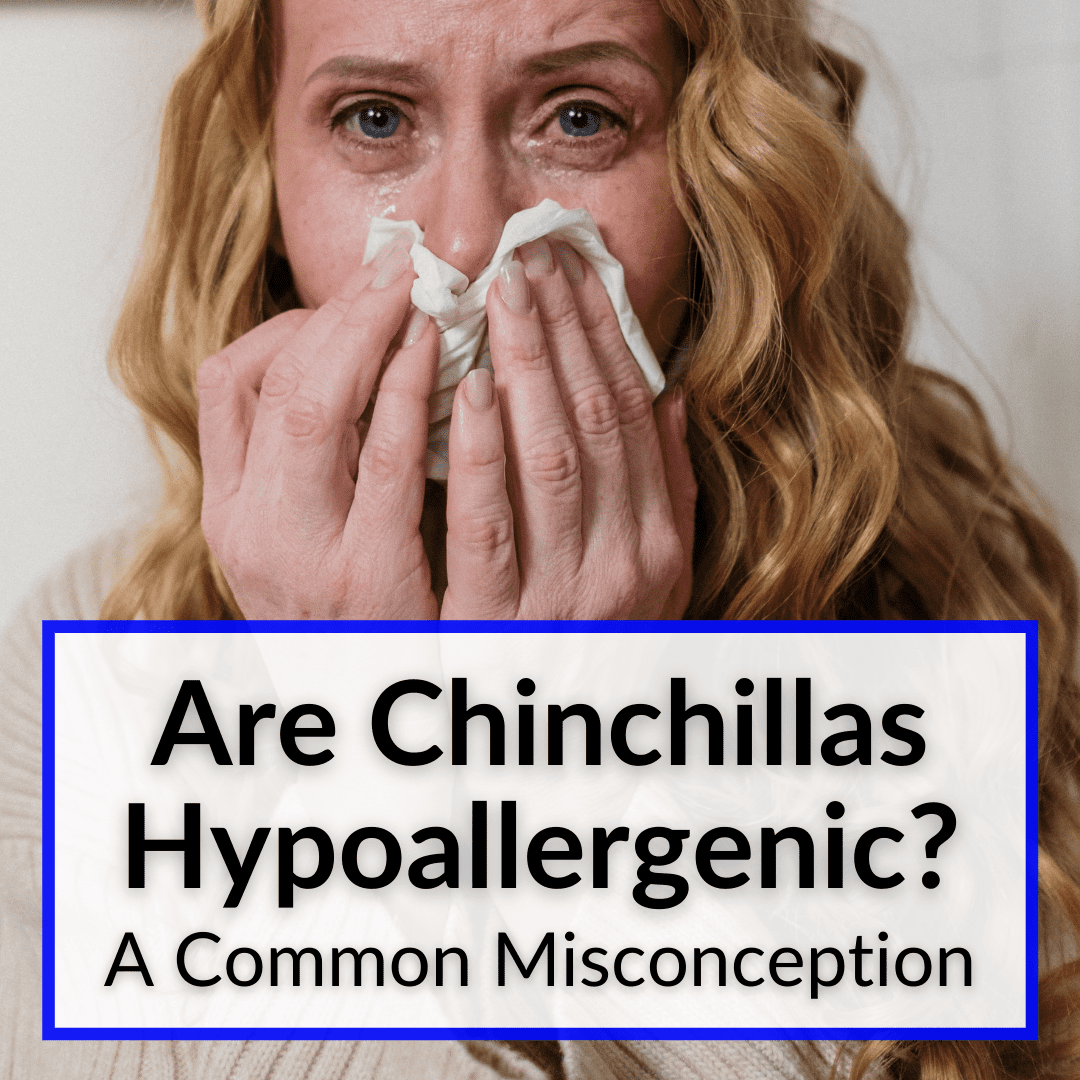
It has always made owning a pet challenging.
I love my dog, but I pay for it.
That’s why I started looking into pets that are more allergy friendly.
And I soon learned that many people consider chinchillas hypoallergenic.
But not everyone. There is a bit of a debate on the subject.
So which is it? Are chinchillas hypoallergenic, or are they not?
Keep reading to learn everything you need to know about chinchillas and pet allergies. If you suffer from allergies, you need to know this before you adopt a chin.
Contents
Are Chinchillas Hypoallergenic?
Yes, chinchillas are hypoallergenic. They produce minimal to no dander minimizing the risk of allergic reactions. But they are not considered non-allergenic, because someone with severe allergies could still experience some reaction.
It is important to understand that there is a significant difference between hypoallergenic and non-allergenic pets. Do not worry, I plan to cover everything you need to know about chinchillas and allergies in this brief post.
I’ll give you an overview of a chinchilla’s fur, cleanliness, and the potential to trigger allergies.
By the end of this post, you should understand what owning a chinchilla will entail for your allergies, in addition to how to clean chinchillas are in general.
😕Adopting and caring for a new chinchilla can be intimidating and confusing. But it does not have to be.
Be sure to check out my full digital eBook “Avoiding Critical Mistakes: Ultimate Chinchilla Care eBook” for the best advice, tips, and tricks and supply recommendations to make adopting and caring for a chinchilla much more comfortable and easier to understand.
You can learn more about this eBook offer using the link directly below.
Learn more here:👉 Avoiding Critical Mistakes: Ultimate Chinchilla Care eBook Offer
Chinchillas Are Allergy Friendly
Again, before getting too deep into this post, it is important to realize that there is a difference between hypoallergenic and non-allergenic pets. The chinchilla is considered hypoallergenic, not non-allergenic.
Their dense fur means they produce minimal dander and barely shed. But they can still produce some dander and they do shed a little.
That means that someone with severe allergies could still experience an allergic reaction from a chinchilla. In addition to the minimal dander and shedding, there are also secondary factors that result in an allergy attack.
These secondary causes of allergies from owning a chinchilla, refer to the dust baths that these rodents take or the timothy hay that they eat. We’ll have more on this later, along with solutions.
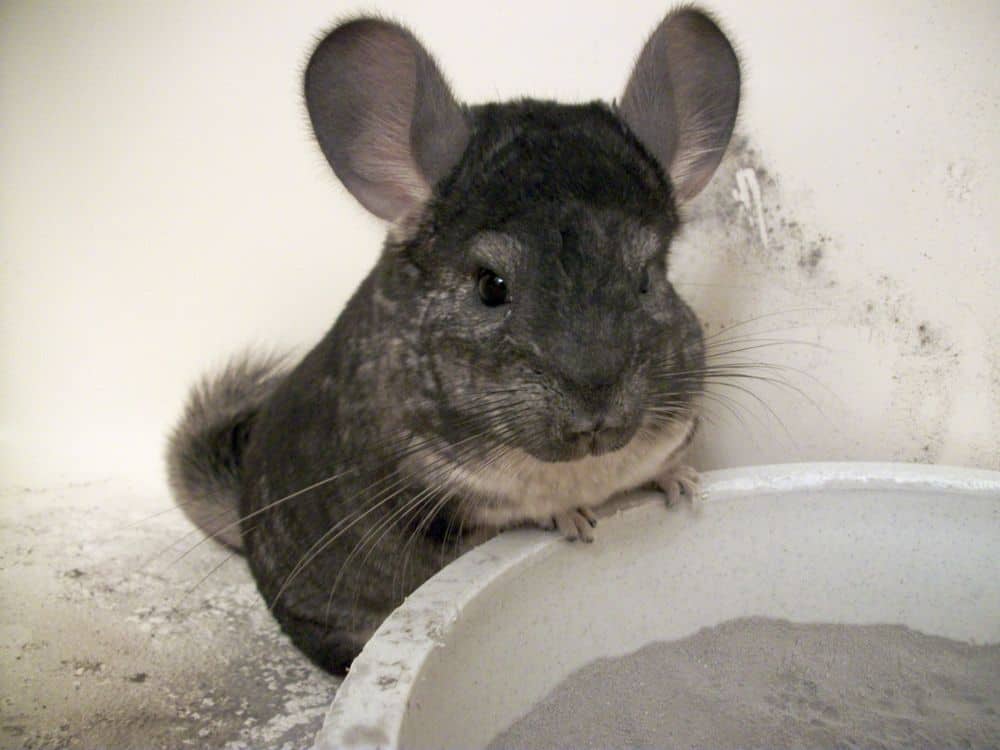
In general, unless you have very severe allergies, you can count on a chinchilla not causing you any issues with your allergies.
I happen to have severe allergies to pets and my chinchilla causes me absolutely no problems at all. That is why I am so comfortable making the statement that chinchillas are 100% hypoallergenic.
I have even been in the hospital before due to an allergic reaction from petting a horse when I was teenager, so to say my allergies are severe may even be an understatement. But I have owned a chinchilla for 5 years and have had absolutely zero issues with my allergies.
Chinchillas Are Very Clean
Chinchillas are one of the cleanest animals you can adopt, which is a big factor in their allergy-friendliness. They are also odorless for the most part and you do not have to worry about a chinchilla producing any smell.
Not to mention the fact that they are, by and large, very easy to take care of.
More importantly, they are not heavy shedding animals which is one of the primary reasons they can be classified as hypoallergenic. They also produce minimal dander which also helps make them extremely allergy-friendly.
It’s a bit of a debate among those with the most severe allergies whether chinchillas are considered hypoallergenic, due to their dense fur (more on this later).
A chinchilla will typically shed very lightly during significant seasonal changes, but compared to other animals, it’s very minimal.
For example, my chinchilla is in my basement in the Critter Nation 2 cage. As a side note, this cage is by far the best option for a new chinchilla owner due to size, durability, and comfort for your chinchilla.
It’s currently the cage I use and helps immensely, if you choose to purchase fleece liners, which can further reduce allergies from owning a chinchilla.
That’s because you can find cut-to-fit liners specifically for this cage, like the Piggy Bed Spread ones I currently use.
- Designed specifically for Critter Nation Cage
- Includes: Two large pan liners (one with a notch/cut-out for the ramp opening, Two small shelf liners and three ramp covers
- Available in various designs
They are fantastic for reducing allergies even further, because they eliminate the need to use any chinchilla bedding going forward. Not to mention, they save you money in the long run.
The Critter Nation cage is not the cheapest, but it is only slightly more than other good options. And the difference in quality is a lot larger than the increase in price.
But if you want to take a look at some less expensive options, read my full guide on choosing the best chinchilla cage.
Anyway, back to the topic at hand.
Above my chinchilla’s cage, there is a black lighting track installed in the basement ceiling. After a couple of months without cleaning the track lights, I’ll find a slight amount of dust above her cage.
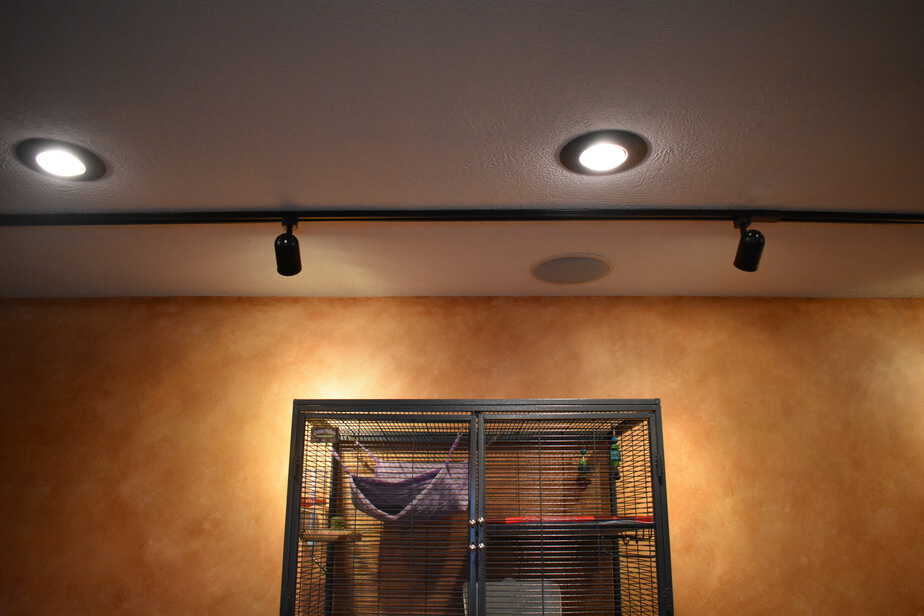
This shows that shedding and dander she produces are almost non-existent. It is entirely different than what my dog produces if I don’t clean the hair he releases around the house daily.
Chinchillas don’t produce hair that floats around everywhere like some other animals do with their shedding and that is a huge benefit for those of us with allergies.
What my chinchilla leaves behind is more of light dust covering a dark surface. And that’s after months of not wiping it down.
If you clean the surfaces near the cage frequently, even just monthly, you would probably have no physical signs a chinchilla was even in the home (please clean a bit more often than monthly, though).
There is no odor and no fur lying around. It’s amazing how clean my chinchilla is, when I really think about it.
Video Covering How Hypoallergenic Chinchillas Are
Directly below, I have a quick video I made showing you how clean chinchillas are and breaking down the topic of a chinchilla being hypoallergenic and allergy-friendly.
Just be sure to continue reading the remainder of this post, because there is a lot of content that is not in the video.
Not to mention, I still have other great tips and tricks you can implement with your chinchilla to reduce allergies even further, for those of you who have extreme allergies in general.
Here’s that video for you.👇
In addition to being allergy friendly, chinchillas also wash themselves and take care of their hygiene on their own (for the most part). Outside of a regular dust bath and an infrequent and occasional brushing, your chinchilla will groom itself.
This is part of the reason you don’t notice any dander or other flaky skin and fur substance that can begin sending your allergies into overdrive.
When it comes to deciding if you should adopt a chinchilla due to the potential of allergies, I would say with 100% confidence that you will have no issues.
Consider Fleece Liners To Reduce Allergies Even Further
I already touched on this a bit above. Fleece liners are my secret weapon with owning a chinchilla, for so many reasons.
First, they just look a lot better inside of the cage. They are also a lot easier on your pet’s feet.
They stay clean longer, they are easier to clean when you do need to clean them, and they eliminate your need to ever purchase wood shavings again (saving you a lot of money in the long run).
Here’s the best part.
If you have no more shavings falling out of the cage or collecting urine under the wire bottom cage, your allergies should become even more minimal.
I can’t say enough good things about these liners.
I used regular shavings for about 2 weeks, made the switch, and ultimately ended up purchasing 3 sets of fleece liners
Don’t stress, one set will do just fine. I just liked having the backups.
If you want more information on the various bedding options like fleece, read my post on the best chinchilla bedding options.
More Tips On Reducing Allergens
If you are allergic to your chinchilla’s dander, there are a number of things you can do to try and reduce the amount of dander in your home.
The first thing you can do is invest in an air filter for your home, or at least the room where you keep your chinchilla. This should significantly reduce the amount of dander in the air.
You could also keep your chinchilla in a separate room or area away from where people spend their time. This also helps reduce the spread of dander.
Lastly, regular cleaning and vacuuming of the chinchilla’s cage and surrounding areas will help keep dander levels low. And this is something you should be doing anyway, right?
Aspects Of Owning A Chinchilla That May Cause Allergy Problems
Although the chinchillas themselves aren’t going to send your allergies into overdrive, there are a few considerations to keep in mind that still may cause your allergies to act up.
With chinchillas, it is usually one of the following three things that can trigger allergies.
Dust For Chinchilla Dust Baths
Chinchillas clean their fur by rolling around in specialized dust that you put inside a dust bath house, or just a regular bowl or Tupperware.
This allows them to remove oils from their fur and to stay clean. Not to mention, they absolutely love it.
Assuming you have bad allergies or even asthma, it’s possible that being close to the dust, or even allowing the dust to collect around the chinchilla cage, may cause allergies or trigger an asthma attack.
You can read about the best chinchilla dust to use for your chinchilla here. You can also learn how to give a chinchilla a dust bath here.
Solution To This Allergy Problem
An easy solution to this problem is to keep a small distance between you and your chinchilla during dust bath time.
Chinchillas take these dust baths 2 to 3 times per week. Just sit a few feet back. And always make sure to clean your chinchilla cage on a regular basis.
Chinchillas are known to climb all over their cage. After a full-blown dust bath, they may shake some dust off within their cage. Allowing the dust to collect and settle could begin to activate your allergies.
Timothy Hay
Timothy hay could be reason number two that you may experience some allergy issues when owning a chinchilla.
Chinchillas consume timothy hay and pellets. Those are the primary sources of food for these rodents.
Some people struggle with the allergies that the hay can produce. And unfortunately, there isn’t really a good remedy for this.
The only thing you can really do to limit the allergic reactions from the hay is to ensure the cage is always clean and to wear a mask when filling your chinchilla’s hay feeder.
You could also consider using hay cubes instead of loose hay, as I do currently for my chinchilla.
I use these specific hay cubes.
Using cubes like those reduces loose hay in the cage and around the cage, which can help with allergies. Not to mention, the cubes are great for chinchillas and allow them to file down their teeth.
Timothy hay is essential. It has minerals you pet needs and fulfils crucial dietary needs for your chinchilla. You can’t not feed your pet the hay, so you’ll need to find a way to work with it, if it triggers your allergies.
Urine-Soaked Aspen Shavings
Urine-soaked shavings can create an odor if not cleaned in a timely manner. This may be another source of potential allergy problems.
An excellent remedy for this would be to clean the bedding and cage regularly. O you can use a set up like mine.
As mentioned previously, I use custom made fleece covers. This eliminates the need for wood shavings altogether. No shavings, no allergies.
Fleece liners are a huge lifesaver in many ways. We already covered that above.
I’ve also placed a small litter pan in my chinchilla’s cage that gives her a fixed spot to pee.
I’m still working through the potty-training process currently, but this would be an excellent way for you to reduce the allergies produced by this problem.
You can read about the best litter to use for your chinchilla here.
I also don’t see this being an ongoing issue for your allergies, as long as you remain diligent with your cage cleanings. Even if you use wood shavings and not fleece, replacing them when they get soiled should curtail any problems.
Hypoallergenic Chinchillas: Related Questions
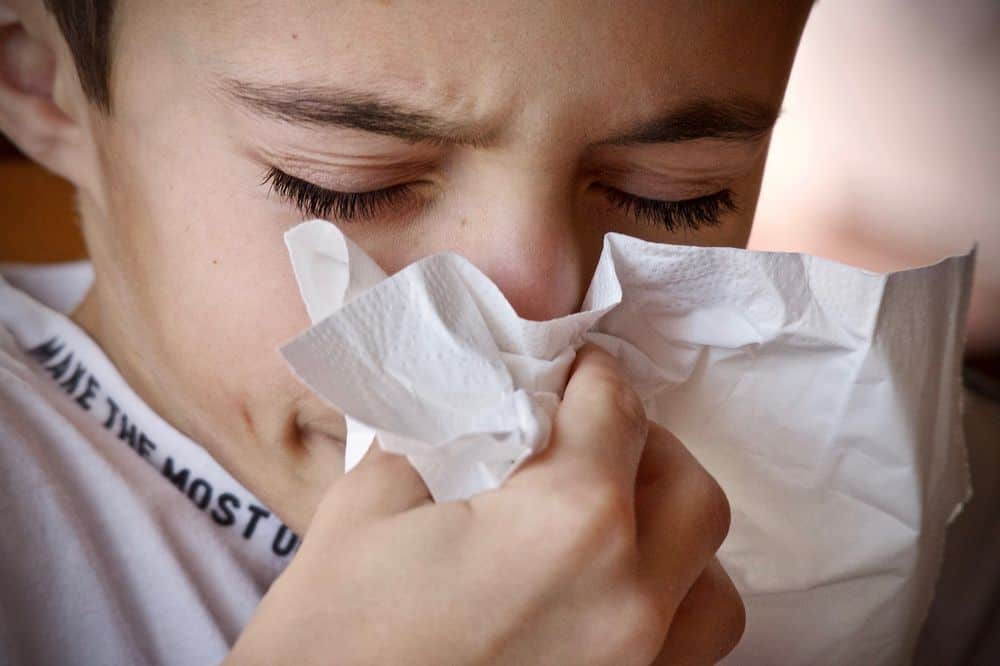
The following are some of the more common questions we get related to chinchillas being hypoallergenic.
Can You Purchase Hypoallergenic Chinchilla Dust?
No. Chinchilla dust is created specifically for chinchilla bathing and is made of 100% natural volcanic mountain pumice. It’s designed to pull oils and dander from your chinchilla’s fur and is essential to your pet’s hygiene and overall health. Hypoallergenic dust for chinchillas is not an option.
Can You Be Allergic To Chinchillas?
Yes, you can be allergic to chinchillas. Although chinchillas are considered hypoallergenic, it’s possible that someone with severe allergies could have allergic reactions to them.
Chinchilla Allergies: Final Thoughts
If you are looking for a hypoallergenic pet, the chinchilla is one of the best options you can consider.
While they are not considered non-allergenic, they are as close as it gets to a clean family pet that will produce little to no allergic reactions.
Overall, chinchillas should do very little to trigger your allergies, if anything at all. But it is possible that the dust, urine-soaked shavings, or timothy hay could cause some irritation.
With regular cage cleanings and proper precautions, a chinchilla can be one of the best pets you could consider adopting.
Remember, as I stated earlier in this post, my allergies to animals are severe. My chinchilla has caused absolutely no issues for me.
Chili and I wish you the best of luck with your new chinchilla and hope the allergies work out as well for you as they did for me.
I’d love to hear your feedback on this topic.
Does your chinchilla cause any allergy problems for you or other family members?
Do you have anything else to share with the rest of us on this topic?
Be sure to share your thoughts, stories, and concerns by dropping a comment below.
As always, Chili and I appreciate you stopping by and reading today and we will see you again next time!
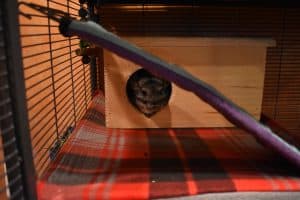
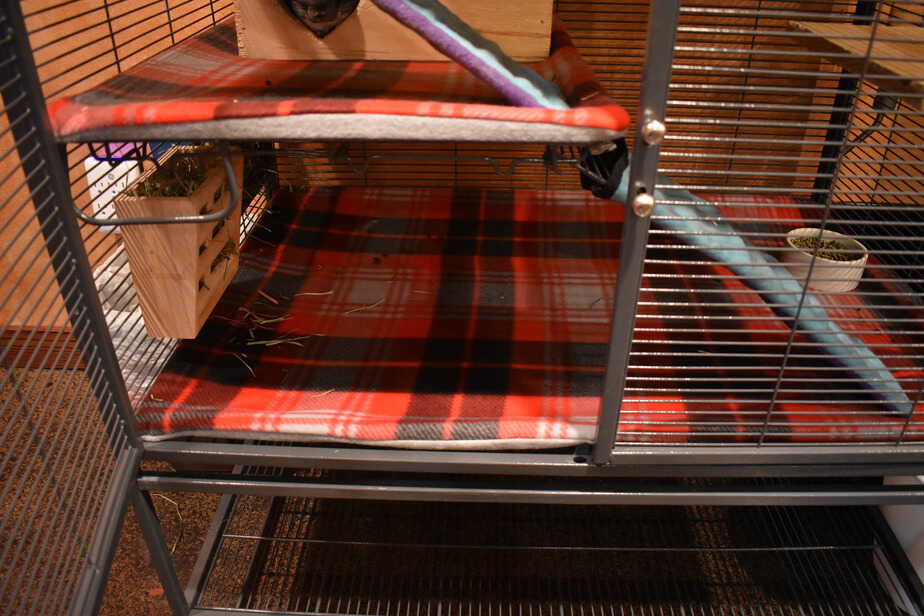

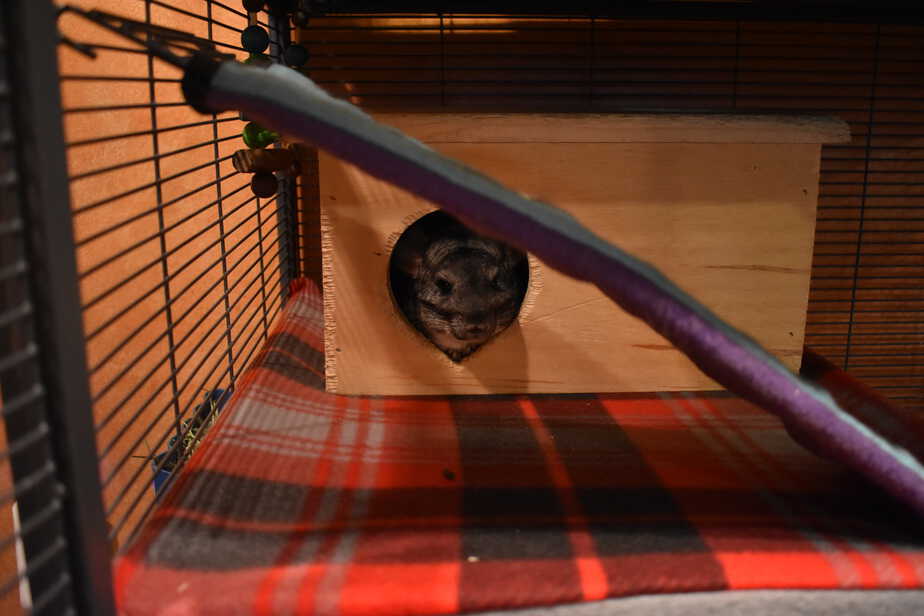
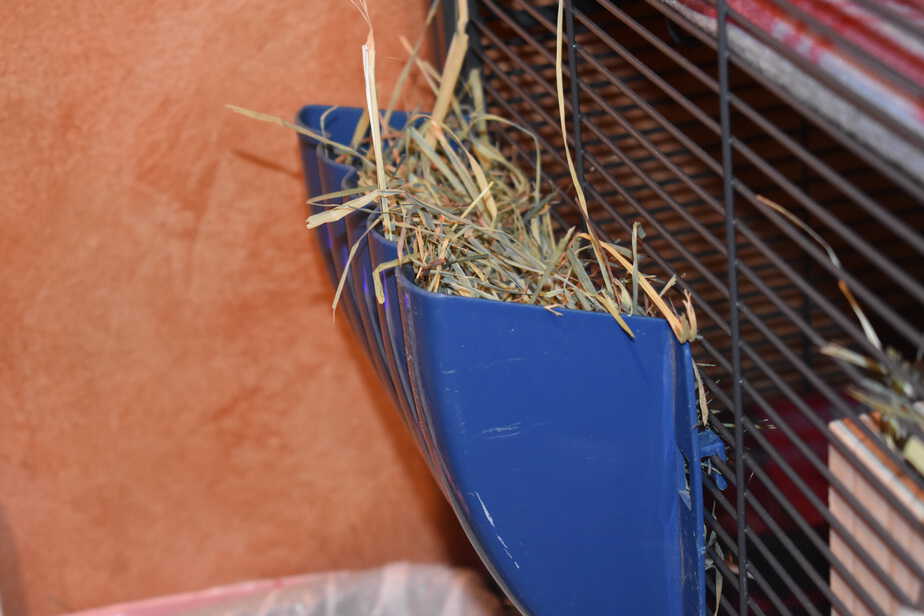

Sara says
This information is so helpful! My husband is really struggling with cleaning our chinchilla’s cage due to hay allergies. We will try cubes to see if she likes them. If anyone has any hay suggestions (which I realize is a difficult issue) I am definitely open to any suggestions!